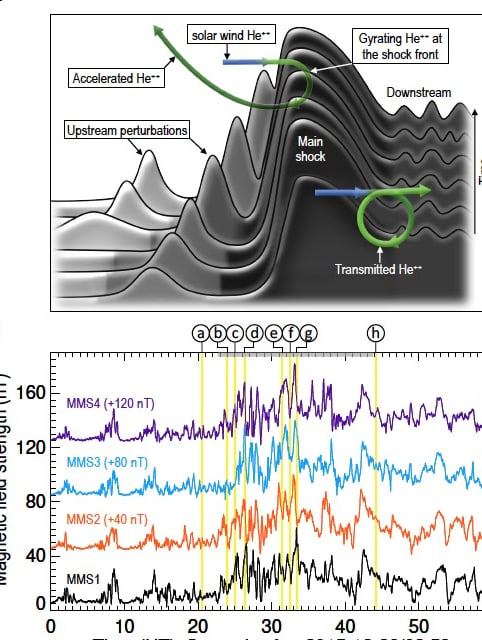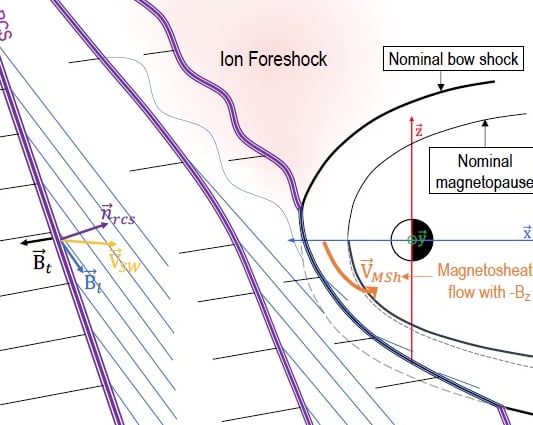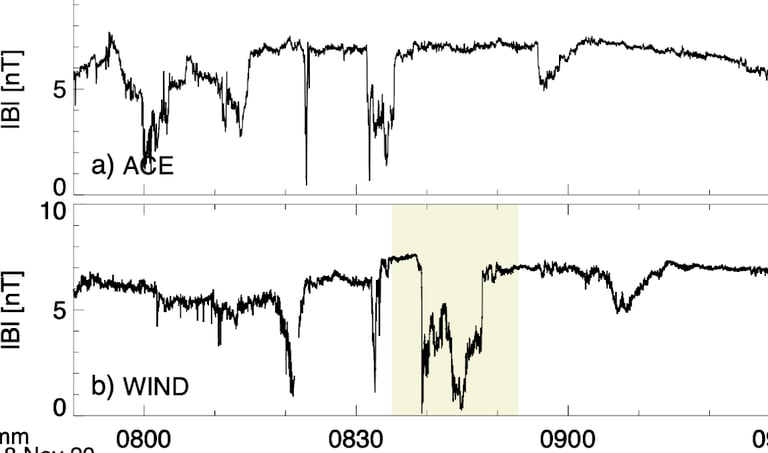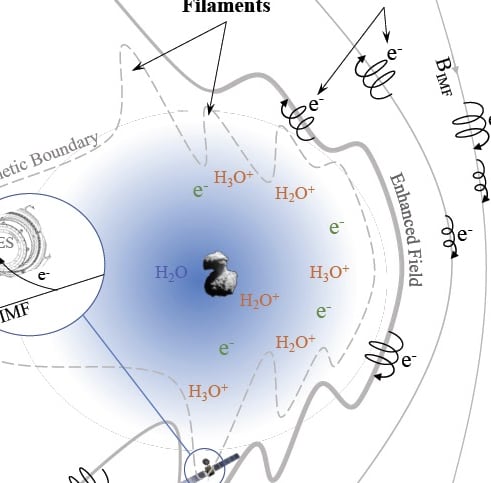Highlighted Research


A schematic of the shock profile and representations of solar wind ion trajectories at the shock front (top), and in-situ measured magnetic field profiles [Madanian et al., 2021].
Hadi Madanian, Daniel B. Graham, Ahmad Lalti. Properties of Earth’s bow shock at large geocentric distances: A case study. Planetary and Space Science, Vol. 269, 2025, 106214, https://doi.org/10.1016/j.pss.2025.106214.
Hadi Madanian, Yann Pfau-Kempf, Rachel Rice, Terry Zixu Liu, Tomas Karlsson, Savvas Raptis, Drew Turner, Jason Beedle (2025). Sunward Flows in the Magnetosheath Associated with Magnetic Pressure Gradient and Magnetosheath Expansion. Front. Astron. Space Sci. Sec. Space Physics Volume 12 - 2025, doi: 10.3389/fspas.2025.1574577.
Madanian, Hadi, Steven J. Schwartz, Stephen A. Fuselier, David Burgess, Drew L. Turner, Li-Jen Chen, Mihir I. Desai, and Michael J. Starkey. 2021. “Direct Evidence for Magnetic Reflection of Heavy Ions from High Mach Number Collisionless Shocks.” The Astrophysical Journal Letters 915(1):L19. doi: 10.3847/2041-8213/ac0aee.


Changes in the shape of a magnetic anomaly carried by the solar wind and measured by two solar wind monitors [Madanian et al. 2022].


Interaction of a reconnecting current sheet with Earth's bow shock and magnetopause [Madanian et al. 2022].
Madanian, Hadi, Terry Zixu Liu, Tai-Duc Phan, Karlheinz Trattner, Tomas Karlsson, and Michael W. Liemohn. 2022. “Asymmetric Interaction of a Solar Wind Reconnecting Current Sheet and Its Magnetic Hole with Earth’s Bow Shock and Magnetosphere”. Journal of Geophysical Research: Space Physics. https://doi.org/10.1029/2021JA030079.
A schematic of plasma boundaries around comet 67P [Madanian et al. 2020].


Planetary Ionospheres
Madanian, H., J. L. Burch, A. I. Eriksson, T. E. Cravens, M. Galand, E. Vigren, R. Goldstein, Z. Nemeth, P. Mokashi, I. Richter, and M. Rubin. 2020. “Electron Dynamics near Diamagnetic Regions of Comet 67P/Churyumov- Gerasimenko.” Planetary and Space Science 187:104924. doi: 10.1016/j.pss.2020.104924.
